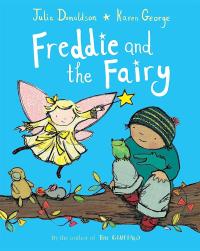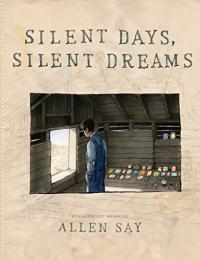
Aurora is nervous before a class presentation where she will use sign language to tell her story. When she makes the butterfly sign, it goes round the world and back, providing the needed confidence. Created by a Deaf author and illustrator, this magical tale will resonate with all.
Butterfly on the Wind

A picture book biography about Evelyn Glennie, a deaf woman, who became the first full-time solo percussionist in the world. From the moment Evelyn Glennie heard her first note, music held her heart. She played the piano by ear at age eight, and the clarinet by age ten. But soon, the nerves in her ears began to deteriorate, and Evelyn was told that, as a deaf girl, she could never be a musician. What sounds Evelyn couldn’thear with her ears, though, she could feel resonate through her body as if she, herself, were a drum. And the music she created was extraordinary. Evelyn Glennie had learned how to listen in a new way.
Listen: How Evelyn Glennie, a Deaf Girl, Changed Percussion

Jazz! It’s all about the rhythm and the sounds, musicians in conversation answering each other with notes and riffs instead of words. But what happens when one member of the band can’t hear the notes anymore? Through this rhythmic story, readers meet Lee, who loses his hearing and is asked to leave his band. Luckily, he discovers a whole new world of music that exists in the mind and heart at a local school for the deaf.
The Deaf Musicians

Readers will be transported to the rugged Himalayas with this story of a deaf Sherpa boy in Nepal, who braves a storm in search of his family’s yaks. He finds the animals herded around a young calf whose leg is wedged between rocks. Unable to rescue the animal alone, Kami whistles for help. When no one comes, he slips and slides down the icy mountain to get his father and brother. He relates the problem through mime. Together the family rescues the calf, and the plucky hero proudly leads the way home.
Kami and the Yaks

The story of a father and his deaf son who communicate using sign language. They wake up early one morning and walk to the beach to watch the sunrise.
Dad and Me in the Morning

A young boy listens eagerly to the games on the radio, using sign language to tell his deaf father about every new development. Getting into the spirit, his father begins to keep a scrapbook, clipping newspaper articles and photos about Jackie. One day, the father has big news: they’re going to Ebbets field to watch Jackie play in person!
Dad, Jackie, and Me

Actors from the Little Theatre of the Deaf are coming to Moses’ school, and Moses and his classmates are going to see a play! A class from another school joins them, and Moses is introduced to Manuel, who has just moved to the U.S. Manuel doesn’t know English or sign language yet. Moses, being deaf, knows how hard it can be when no one understands you, so he tries communicating with Manuel using body gestures, while also teaching him some simple signs. The book is written in English and American Sign Language (ASL). Detailed diagrams of the signs are included so that readers can learn along with Manuel.
Moses Sees a Play

A fairytale about a boy who meets a fairy who can’t hear very well. He learns the importance of clear communication and the golden rules for talking to someone who is deaf or hard of hearing.
Freddie and the Fairy

Set in India, this story follows the journey of an elephant who goes on a quest to find his hearing. He meets friends who have different abilities and talents and discovers his own special gift.
Ranvir Cannot Hear

This kid-friendly guide to American Sign Language (ASL) provides an enjoyable and accessible introduction to the language’s fundamentals. It begins with succinct instructions, an alphabet chart that includes a note about finger spelling being acceptable when a sign is not known, and proceeds through a range of everyday words and signs (feelings, colors, shapes, and so forth).
Time to Sign: Sign Language for Kids

This is the story of Gracie, your everyday fun-loving kid who does everything that you do, but has trouble hearing. It’s as if her ears are sleeping! When her family searches for answers, she discovers the wonder of hearing aids and the sounds of the world. Gracie’s Ears introduces what hearing aids are to young children needing help to hear and to their friends who wonder — what are those things in their friend’s ears and what do they do?
Gracie’s Ears

James Castle was born deaf and mute in 1899 on a farm in Idaho. The story of this child who grew up to become an artist is told in his nephew’s voice and illustrated in dark-hued illustrations that evoke not only the artist’s work but also his difficult life. Allen Say’s appreciation of this artist and his work is sophisticated and memorable, presenting a unique and truly original artist.
Silent Days, Silent Dreams

In this funny, poignant graphic novel memoir, Bell chronicles her hearing loss at a young age and her subsequent experiences with the Phonic Ear, a very powerful — and very awkward — hearing aid. The Phonic Ear gives Cece the ability to hear — sometimes things she shouldn’t — but also isolates her from her classmates. After some trouble, she is finally able to harness the power of the Phonic Ear and become “El Deafo, Listener for All.” And more importantly, declare a place for herself in the world and find the friend she’s longed for.
El Deafo

Anne Sullivan arrived at the Keller home in 1887, writing letters to a friend about how she worked with a deaf and blind girl named Helen. Anne’s words combine with a straightforward narration and gentle illustrations to provide deeper insight into how Helen Keller grew into a brilliant woman.
Annie and Helen

William Hoy wasn’t born deaf but lost it as a boy growing up in rural Ohio. In spite of his hearing loss, Hoy went on to become a remarkable major league baseball player at the end of the 19th century. His little known story is sure to inspire contemporary readers who will meet him in this handsome, detailed picture book biography.
Silent Star: The Story of Deaf Major Leaguer William Hoy

Most of us have heard of Helen Keller, but few have heard of Laura Bridgman. Left blind and deaf in her childhood in the 1830’s, Bridgman attended school and taught Helen’s teacher, Annie Sullivan, to fingerspell.
She Touched the World: Laura Bridgman, Deaf-Blind Pioneer

Narrator Frannie keenly observes the changing dynamics in her classroom when a new white student arrives. Frannie also frets about her family — her deaf brother isolated from the hearing world and her pregnant mother prone to miscarriages.
Feathers

George Ancona’s colorful photographs capture the spirit, movement, and form of basic finger spelling used by the deaf and often learned by hearing children as well.
